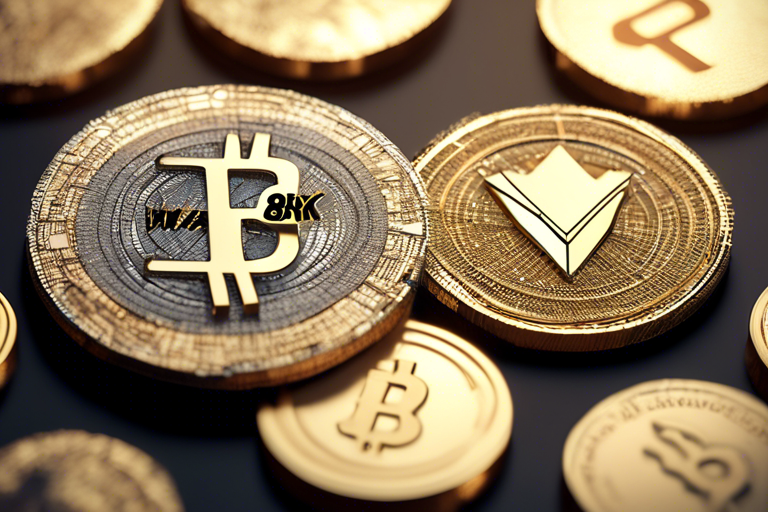Understanding the Current State of Bitcoin Mining Challenges ⚡
The Bitcoin mining sector is navigating a multitude of challenges that threaten its sustainability. Factors such as escalating production costs, heightened competition, and unfavorable economic conditions impact miners significantly. This year presents unique hurdles that miners will need to overcome to maintain profitability and operational effectiveness. A recent report from CoinShares provides valuable insights into the existing landscape of Bitcoin mining and its future projections.
Escalating Production Costs for Bitcoin ⬆️
Miners are currently grappling with surging production expenses. The increasing difficulty of mining, combined with decreasing hash prices, has inflated the average cost of producing a Bitcoin to approximately $49,500, a rise from $47,200 noted in the first quarter. This figure only captures immediate cash costs. When considering depreciation and stock-based compensation, the comprehensive average cost rises to around $96,100.
In response to the financial pressure, miners are adopting energy-efficient techniques, such as curtailing energy use and embracing alternative sources. However, amid these adaptations, numerous miners are still facing significant financial challenges.
Moreover, the ongoing economic repercussions from rising interest rates have created additional barriers for miners seeking funds. Many are resorting to alternative financing methods like issuing shares, which can ultimately lead to shareholder dilution. CoinShares analysts, James Butterfill and Max Shannon, noted that while this option provides necessary funds, it has proven frustrating for investors due to its impact on shareholder value.
Rising Cost Pressures and Increased Competition 🚀
Butterfill and Shannon project that Bitcoin’s hash rate could climb to 765 EH/s by the close of 2024, up from the current rate of 684 EH/s. By 2050, they anticipate it may reach a theoretical maximum that would contribute to a reduction of carbon emissions from flared gas by 63%. Despite this potential, hash prices are expected to continue their downward trend until the next halving, anticipated in 2028:
“Hash prices, which impact miner profitability, have reached record lows this year. Our forecasting indicates that they are likely to remain fluctuating between $50–32/PH/day until the next halving event in 2028.”
As conditions worsen, competition stiffens in the mining sector. Efficiently operated firms with lower costs are expected to gain the upper hand. Analysts observe that:
“The long-term dynamics of Bitcoin mining are likely to experience growing pressures due to ongoing halvings and rising rivalry from self-miners, corporate entities, and even national governments.”
A noteworthy player in this dynamic, Cormint, has distinguished itself as the most cost-efficient Bitcoin producer, with production costs at $16,700 per Bitcoin. TeraWulf, following closely behind at $18,700 per BTC, utilizes fixed-rate energy agreements and acute energy management tactics. The report emphasizes the importance of managing costs effectively to ensure long-term viability in this competitive landscape.
On the contrary, Riot shows the highest production expense at $65,900 for each Bitcoin. Nevertheless, it benefitted from power curtailment credits amounting to $13.9 million in Q2 2024, mitigating some of its net power costs.
The Viability of Bitcoin Mining Amid Challenges 🌧️
The CoinShares study examines strategies that miners are employing to navigate current difficulties. Some companies, including Riot, CleanSpark, and Bitfarms, are focusing on capital efficiency and diversification—prioritizing growth through increased efficiency rather than merely expanding their infrastructure.
Other players, such as Core Scientific, are implementing revenue stabilization strategies that reduce their reliance on Bitcoin’s volatile pricing patterns. Analysts assert that the future of Bitcoin mining is contingent on adept cost management and capital allocation; miners who apply effective strategies are likely to fare better amidst rising difficulties and market instability. The report highlights:
“Publicly traded mining companies must prioritize cost-cutting and profitability for multiple reasons: to enhance shareholder value, lessen dependence on equity capital markets, and maintain a high threshold for shareholder dilution, as well as support future growth capital expenditure (capex) initiatives.”
Hot Take on Bitcoin Mining Challenges 🔍
This year, the Bitcoin mining industry faces formidable headwinds, characterized by lofty production costs and intense competition. The choices miners make now around financing and efficiency will be pivotal in shaping the sector’s future. As the landscape evolves with the introduction of new technologies and stricter regulations, only those firms that can navigate these waters skillfully will endure and thrive in this complex environment.
In conclusion, the current state of Bitcoin mining underscores the necessity of strategic adaptability and financial prudence. As the market dynamics shift, vested parties should closely monitor these trends to understand the implications for the future of Bitcoin mining.





 By
By

 By
By

 By
By